Kano 官方網站:http://kano.me
下載 Kano
選擇 Downloads [@more@]Kano OS Burner 是可以線上下載最新版的 Kano OS 並燒錄到記憶卡中
[@more@]Kano OS Burner 是可以線上下載最新版的 Kano OS 並燒錄到記憶卡中
底下是操作 Kano OS Burner 來下載最新版本的 Kano OS
選擇要燒錄的記憶卡代號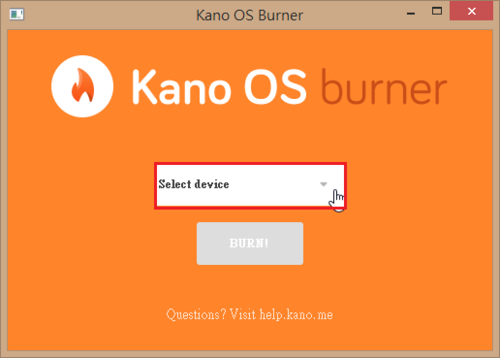
Kano OS Iamge 則是解壓縮,再用 Win32DiskImager 燒錄即可!

全新的繁體中文 WordPress 網站《宜蘭部落格教育平台 網站》
Kano 官方網站:http://kano.me
下載 Kano
選擇 Downloads [@more@]Kano OS Burner 是可以線上下載最新版的 Kano OS 並燒錄到記憶卡中
[@more@]Kano OS Burner 是可以線上下載最新版的 Kano OS 並燒錄到記憶卡中
底下是操作 Kano OS Burner 來下載最新版本的 Kano OS
選擇要燒錄的記憶卡代號
Kano OS Iamge 則是解壓縮,再用 Win32DiskImager 燒錄即可!
S4A 是一個縮寫,其中 S 代表的是 Scratch ,4 代表的是 for ,A 代表的是 Arduino,更詳細的介紹可以使用 Google 來搜尋。
S4A 官方網站:http://s4a.cat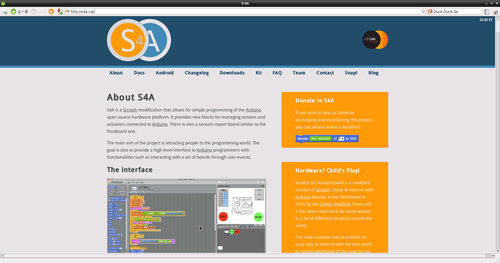 [@more@]首先點選 Downloads
[@more@]首先點選 Downloads
共要下載 Raspbian (Debian for RaspberryPi) 和 S4A 的 fireware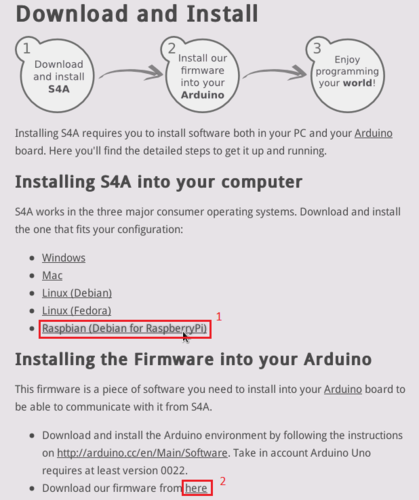
開啟終端機下載 Raspbian (Debian for RaspberryPi)
$ wget http://vps34736.ovh.net/S4A/S4A15_RP.deb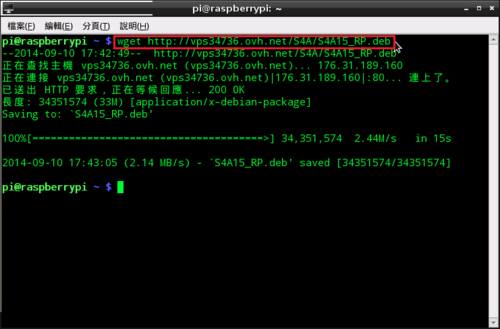
下載 S4A 的 fireware
$ wget http://vps34736.ovh.net/S4A/S4AFirmware15.ino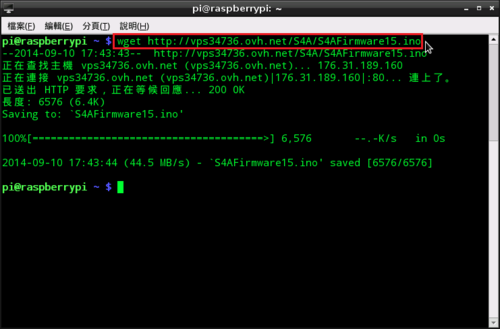
安裝 Raspbian (Debian for RaspberryPi) 套件
$ sudo dpkg -i S4A15_RP.deb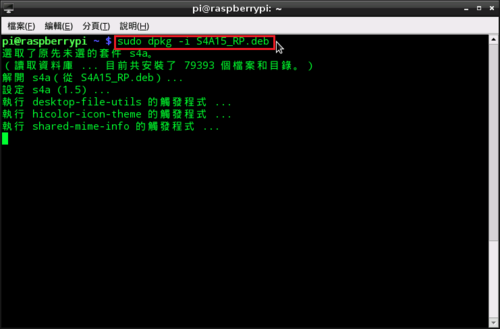
也可以將程式類似捷徑的部分複製到桌面,可以比較方便執行
$ cp /usr/share/applications/s4a.desktop Desktop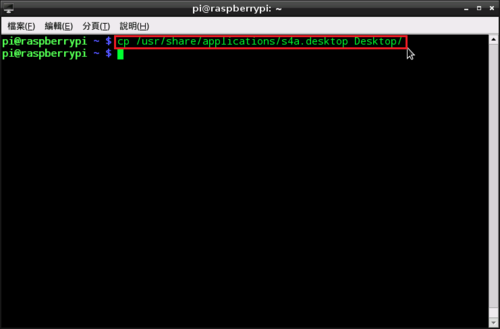
因為借測的 Banana Pi 已經歸還,所以把之前覺得很慢的 Raspberry Pi 又拿出來重新玩了一下,經過一番個人使用環境的調整及超頻之後,覺得速度還在可以接受的範圍。
之後打算用這一片 Raspberry Pi 來練習 Linux Shell Script 和 Arduino,所以安裝 Arduino。
1. 首先將 Arduino 板子連接到 Raspberry Pi
執行 dmesg 查詢連接 Port
$ dmesg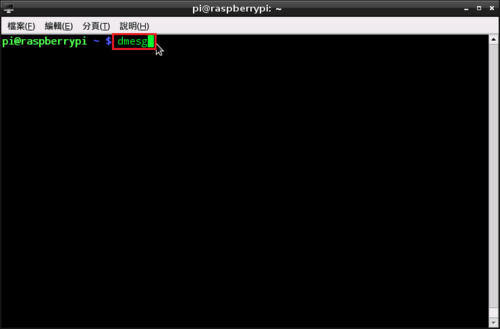 [@more@]
[@more@]
Port 為 /dev/ttyUSB0
安裝 Arduino
$ sudo apt-get install arduino arduino-mk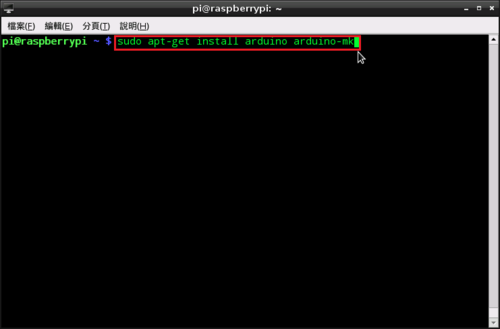
加上 ArduBlock
建立目錄
$ sudo mkdir -p /usr/share/arduino/tools/ArduBlockTool/tool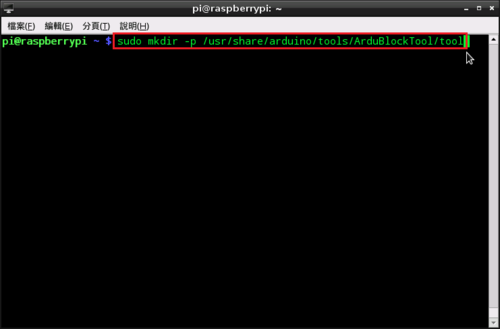
切換目錄
$ cd /usr/share/arduino/tools/ArduBlockTool/tool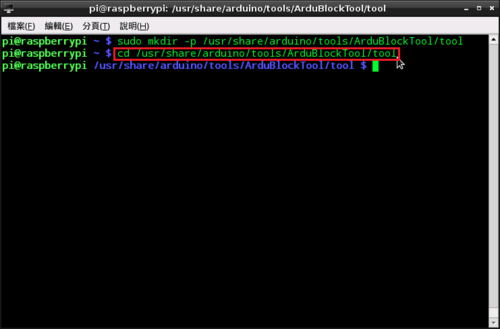
下載 ArduBlock
$ sudo wget http://sourceforge.net/projects/ardublock/files/ardublock-beta-20140828.jar
Kali Linux 是一套 base Debian 的 Linux,被設計用於數位取證和滲透測試,對於 Kali Linux 大家可能比較陌生,但它的前身可是大大有名的 BackTrack。
Kali Linux 官方網站:http://www.kali.org/
Kali Linux 的 Raspberry Pi Image 下載:http://www.offensive-security.com/kali-linux-vmware-arm-image-download/ [@more@]啟動 Raspberry Pi 後畫面
[@more@]啟動 Raspberry Pi 後畫面
做一些簡單的使用上調整
安裝套件
# apt-get install vim mlocate
修改 .bashrc 設定
# vim $HOME/.bashrc
# You may uncomment the following lines if you want `ls’ to be colorized:
export LS_OPTIONS=’–color=auto’
eval “`dircolors`”
alias ls=’ls $LS_OPTIONS’
# alias ll=’ls $LS_OPTIONS -l’
# alias l=’ls $LS_OPTIONS -lA’
#
# Some more alias to avoid making mistakes:
alias rm=’rm -i’
alias cp=’cp -i’
alias mv=’mv -i’
alias cls=’clear’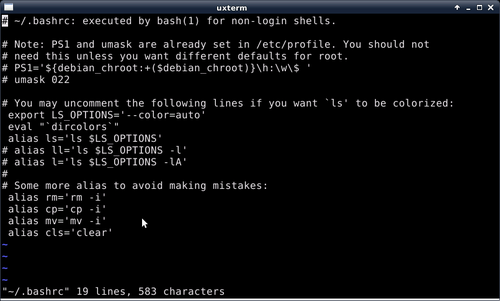
之前有在 BackTrack 上使用過 metasploit,現在大概都忘光了!不過我發現這個版本似乎沒有把一些工具都放在功能表中。
# apt-cache search metasploit
armitage – Cyber attack management for Metasploit
framework2 – Metasploit Framework 2
hexorbase – Multiple database management and audit application
metasploit-framework – Framework for exploit development and vulnerability research
recon-ng – Web Reconnaissance framework written in Python
ruby-msfrpc-client – Ruby API for the Rapid7 Metasploit Pro RPC service
sandi – Exploit search engine
sqlninja – SQL server injection and takeover tool
teamsploit – Tools for group based penetration testing
w3af – framework to find and exploit web application vulnerabilities
w3af-console – framework to find and exploit web application vulnerabilities (CLI only)
metasploit – Penetration testing and exploit development tool with web-based interface
因為測試系統的需要,所以手動 Mirror Banana Pi & Raspberry Pi Image 在學校的 Server。
Banana Pi Image 下載:http://www.lemaker.org/resources/9-38/image_files.html
學校:
ftp://140.111.74.109/BananaPi
[@more@]
Raspberry Pi Image 下載:http://www.raspberrypi.org/downloads/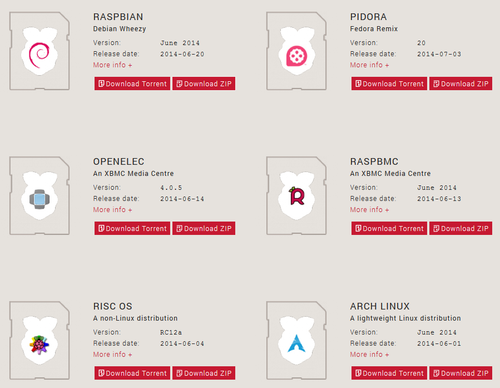
剛安裝完的 Pidora 介面是英文的,底下把它改成中文的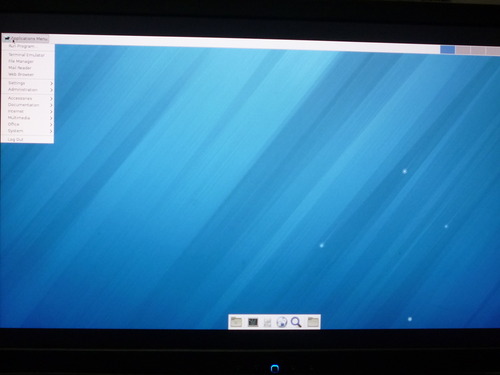 [@more@]
[@more@]
1. 安裝中文字形
# yum install cjkuni-ukai-fonts cjkuni-uming-fonts taipeifonts wqy-bitmap-fonts wqy-microhei-fonts
2. 安裝中文輸入法 gcin 或 scim
# yum install gcin
或
# yum install scim scim-tables scim-tables-chinese scim-tables-chinese-extra scim-array scim-chewing
3. 修改中文環境設定
# vi /etc/sysconfig/i18n
把
LANG=”en_US.UTF-8″
改成
LANG=”zh_TW.UTF-8″
4. 重新開機
Raspberry PI 上的 Pedora 安裝完成後第一次更新,就要更新 3xx 個套件,更新完畢後,出現下面的錯誤訊息
Failed:
lightdm.armv6hl 0:1.4.0-2.fc18 mdadm.armv6hl 0:3.2.6-1.fc18
openssh-server.armv6hl 0:6.1p1-6.fc18 raspberrypi-kernel.armv6hl 0:3.6.11-7.20130415git197d15b.rpfr18
看起來有 4 個套件更新失敗[@more@]經過檢查發現,這 4 個套件都有重複安裝的問題,所以要把多餘的套件移除
# rpm -qa | grep lightdm
lightdm-1.4.0-2.fc18.armv6hl
lightdm-gtk-1.3.1-4.fc18.armv6hl
lightdm-1.4.1-3.fc18.1307170533kf.armv6hl
lightdm-gobject-1.4.1-3.fc18.1307170533kf.armv6hl
# yum remove lightdm-1.4.1-3.fc18.1307170533kf.armv6hl
# rpm -qa | grep openssh-server
openssh-server-6.1p1-9.fc18.armv6hl
openssh-server-6.1p1-6.fc18.armv6hl
# yum remove openssh-server-6.1p1-9.fc18.armv6hl
# rpm -qa | grep mdadm
mdadm-3.2.6-21.fc18.armv6hl
mdadm-3.2.6-1.fc18.armv6hl
# yum remove mdadm-3.2.6-21.fc18.armv6hl
# rpm -qa | grep raspberrypi-kernel
raspberrypi-kernel-headers-3.12.0-4.20131106git839f349.rpfr18.armv6hl
raspberrypi-kernel-3.6.11-7.20130415git197d15b.rpfr18.armv6hl
raspberrypi-kernel-3.12.0-4.20131106git839f349.rpfr18.armv6hl
# yum remove raspberrypi-kernel-3.12.0-4.20131106git839f349.rpfr18.armv6hl
不過重新更新之後,這 4 個套件又會跑出來,所以只能在 /etc/yum.conf 中先排除這些套件
不知道是我操作上的問題,還是 Pidora 的套件庫有問題?
感謝佛光大學惠美老師提供一片 Raspberry Pi 測試,一般大家在介紹 Raspberry Pi 時,作業系統大都是安裝 Raspbian,但因為它是 base on Debian,而且桌面環境是使用 LXDE,操作起來總是覺得介面不是很美觀,功能表上的項目又太多了,所以改安裝 Pidora。
Pidora 是一套 base on Fedora 的 Linux 系統,和 Raspbian 一樣經過一番最佳化,底下是安裝的步驟。
1. 到 Raspberry Pi 官方網站下載 Pidora
http://www.raspberrypi.org/downloads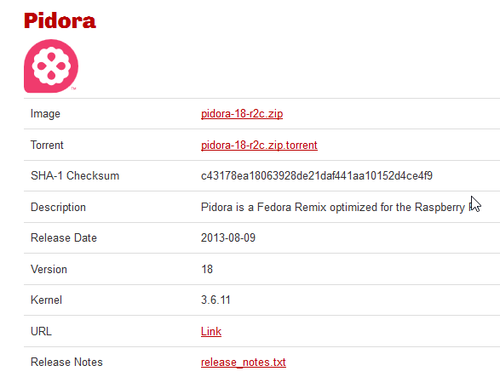 [@more@]2. 下載完畢要使用 win32diskimager 把映像檔寫入到 SDHC 卡
[@more@]2. 下載完畢要使用 win32diskimager 把映像檔寫入到 SDHC 卡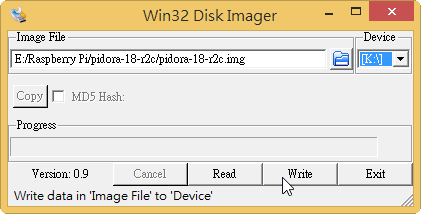
15. 登入之後畫面,桌面環境是 XFCE,操作介面還是英文的
後續就要加以中文化,並安裝一些常用的軟體,也移除一些自己用不到的軟體,讓整個系統能用起來方便,執行速度也在能接受的範圍之內。